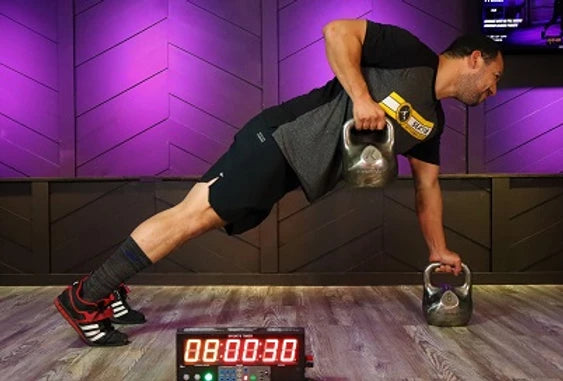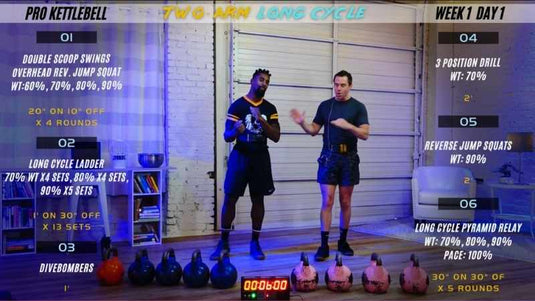Strength Kettlebell Workout: How To Get Strong Without Lifting Heavy

Everyone wants to get strong, but most people go about it the wrong way. In reality, kettlebell strength training could be the missing piece of the puzzle.
Most people go to the gym without a plan and wander aimlessly, picking up weights and putting them down. They may even work up a good sweat, but that doesn’t necessarily mean it’s good exercise. Much like a train with no tracks, a workout without a plan won’t go far.
Others follow overly simplified programs (or “BRO-grams” as I like to call them) that promise massive gains by lifting max weight for short sets and reps. These brograms may yield some short-term results for young, invincible twentysomethings, but the majority of users won’t see the same results. Instead, they’re left feeling demotivated, burnt out and possibly injured. One of the main problems with these brograms? They fail to account for recovery time and correcting imbalances that can occur when doing specific exercises repeatedly and under heavy load.

How Strength Training Works
Weight training builds strength because it causes damage to your muscles, tendons and ligaments. That’s only part of the process.
It’s when you recover from this damage that these tissues repair themselves to be stronger and denser than before. What many don’t realize is that this process takes time. If rushed or overdone, it can cause serious damage such as strains, tears, tendonitis or rhabdomyolysis.
Professional lifters and coaches know how hard they can push the body, and how long it will take to recover from that training.
They know that you’re only as strong as your weakest link. They know that joints, ligaments, and tendons tend to be those weak links as they receive much less blood flow and require more time to repair and strengthen. And that’s why kettlebell strength workouts are worth considering.
Consider Kettlebell for Strength Training
One day, about two years after I quit powerlifting and switched entirely to kettlebell strength workouts, my wife and I were playing around. We ended up going for our max deadlifts on a whim.
We’d only been training with kettlebells that weighed a fraction of the weight we'd previously been lifting, but I was able to match my previous max deadlift that day, and my wife exceeded hers.

When lifting weights, I like to think of the body like a fine automobile. If you give it quality fuel, routine maintenance and drive it smartly, it will take care of you. If you overload it, exhaust the accelerator and slam on the brakes time after time, your car ends up in shambles. Your engine will blow, transmission will break and breaks will be worn down to the rotors.
You should be able to see measurable strength increases utilizing light to medium weights in as little as three weeks by following a strength kettlebell workout plan that considers the benefits and drawbacks of certain exercises while allowing time for mobility and recovery.
Interested in incorporating strength kettlebell training into your routine? Try one of our online classes today!
By Nikolai Puchlov





